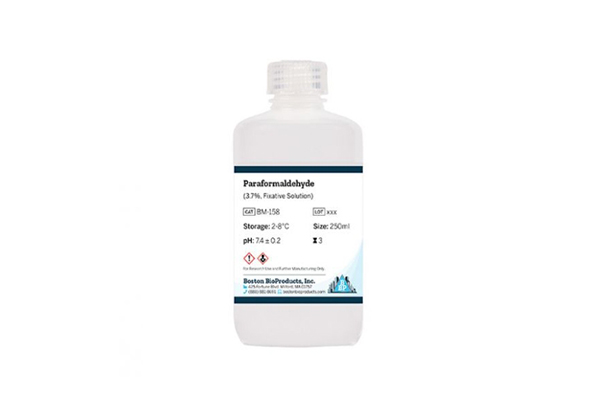How Do You Make 8% Paraformaldehyde?
Paraformaldehyde is a commonly used fixative in biological and chemical laboratories, especially in histology, cytology, and immunohistochemistry. It is essentially a polymerized form of formaldehyde and is typically used to make formaldehyde solutions by depolymerizing it in water. Preparing an 8% paraformaldehyde (PFA) solution is a routine procedure in many labs, but it requires careful handling and attention to detail to ensure the solution is effective and safe. This article will guide you through the materials, steps, and safety considerations involved in making an 8% paraformaldehyde solution.
What Is Paraformaldehyde?
Paraformaldehyde is a white powder composed of polymerized formaldehyde molecules. It is not directly soluble in water, and must be depolymerized using heat and pH adjustment (usually with a buffer such as phosphate-buffered saline, or PBS) to form a clear aqueous solution of formaldehyde. Once fully dissolved and pH adjusted, this solution acts as a potent fixative that crosslinks proteins and preserves biological tissues for analysis.

Materials and Equipment Needed
To make 100 mL of 8% paraformaldehyde solution, you will need the following:
-
Paraformaldehyde powder – 8 grams
-
Distilled water (dH₂O) – Approximately 80–90 mL
-
1 N Sodium hydroxide (NaOH) – A few drops (to adjust pH)
-
Phosphate-buffered saline (PBS) or equivalent buffer – to adjust volume and pH
-
Hot plate with magnetic stirrer or water bath (set at 60°C)
-
Beaker or flask (heat-resistant)
-
pH meter or pH paper
-
Fume hood (strongly recommended due to formaldehyde vapors)
-
Personal protective equipment (PPE) – Gloves, lab coat, goggles
Step-by-Step Procedure
-
Weigh the Paraformaldehyde
Measure 8 grams of paraformaldehyde powder using a precise balance. -
Add Water and Begin Heating
Pour about 80 mL of distilled water into a heat-resistant beaker or flask. Place it on a magnetic stirrer with heating, and begin heating the water to approximately 60°C. Do not allow the solution to boil. -
Add the Paraformaldehyde Powder
Slowly add the 8 grams of paraformaldehyde to the warm water while stirring continuously. -
Adjust pH to Aid Dissolution
Paraformaldehyde doesn’t dissolve easily at neutral pH. Add 1–2 drops of 1 N NaOH to raise the pH slightly. This helps break down the polymer chains into monomeric formaldehyde. -
Continue Stirring and Heating
Stir the mixture until the solution becomes clear, which usually takes 10–20 minutes. If the solution remains cloudy, carefully add another drop of NaOH. Do not add too much, as the final pH must be near physiological levels (around pH 7.4). -
Cool and Adjust Volume
Once the solution is clear, remove it from heat and allow it to cool to room temperature. Then add phosphate-buffered saline (PBS) or distilled water to bring the total volume to 100 mL. -
Check and Adjust pH
Use a pH meter to check the pH. If necessary, use dilute HCl or NaOH to adjust the pH to 7.2–7.4. -
Filter if Needed
If there are any undissolved particles or if sterility is required, filter the solution through a 0.22 µm filter. -
Storage
Store the 8% PFA solution in a tightly sealed bottle, preferably in the refrigerator (4°C). Label it clearly with the concentration, date of preparation, and safety warnings. For best results, use within 1–2 weeks, as prolonged storage may reduce fixative quality.
Safety Considerations
Formaldehyde is a toxic and potentially carcinogenic chemical. Always handle it with care:
-
Work in a fume hood to avoid inhaling fumes.
-
Wear gloves, a lab coat, and eye protection.
-
Dispose of unused PFA and any contaminated materials according to institutional hazardous waste protocols.
Conclusion
Making an 8% paraformaldehyde solution is a straightforward but delicate procedure requiring heat, pH control, and careful handling. It is widely used in biological sciences for tissue fixation and cell preservation, offering consistent results when properly prepared. Always follow lab safety protocols and work in a well-ventilated space when handling paraformaldehyde to ensure a safe and effective preparation.





